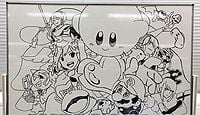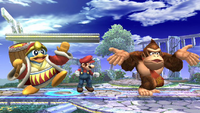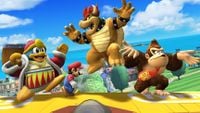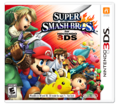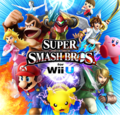| Welcome to SmashWiki! Log in or create an account and join the community, and don't forget to read this first! |
| Notices |
|---|
| The Skill parameter has been removed from Smasher infoboxes, and in its place are the new "Best historical ranking" and "Best tournament result" parameters. SmashWiki needs help adding these new parameters to Smasher infoboxes, refer to the guidelines here for what should be included in these new parameters. |
| When adding results to Smasher pages, include each tournament's entrant number in addition to the player's placement, and use the {{Trn}} template with the matching game specified. Please also fix old results on Smasher pages that do not abide to this standard. Refer to our Smasher article guidelines to see how results tables should be formatted. |
| Check out our project page for ongoing projects that SmashWiki needs help with. |
Super Smash Bros. 4
| Super Smash Bros. 4 (unofficial title) | |
|---|---|
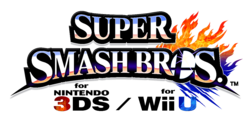 Collective logo for the game. | |
| Developer(s) | Bandai Namco Sora Ltd. |
| Publisher(s) | Nintendo |
| Designer(s) | Masahiro Sakurai |
| Projected release date | Nintendo 3DS September 13, 2014 October 2, 2014 October 3, 2014 October 4, 2014 Wii U November 21, 2014 December 5, 2014 December 6, 2014 |
| Genre(s) | Fighting |
| Mode(s) | Single player, Multiplayer, Online multiplayer |
| Ratings | ESRB: E10+ (3DS)[1] OFLC: PG (3DS)[2] PEGI: 12+ (provisional) |
Super Smash Bros. 4 (also referred to by shorthands such as Smash 4, SSB4, or more informally Sm4sh) is an informal term used to refer to two games in the Super Smash Bros. series, entitled Super Smash Bros. for Nintendo 3DS and Super Smash Bros. for Wii U, created by Namco Bandai[3] and Sora Ltd. The two games feature mostly identical gameplay, with some differences. The 3DS version is the first game of the series to be released on a handheld.
When originally announced in passing at E3 2011, the game's development was slated to begin sometime after October 2011, once development on Kid Icarus: Uprising had completed. [4] In February 2012, it was then confirmed that development on the fourth game had begun.[5] The game was unmentioned during E3 2012, something which many fans were disappointed about despite the known extremely early state of the game; the "first step of the process" was taken shortly after in mid-June. Masahiro Sakurai has expressed disappointment that fans will be waiting for longer than expected for the game to be released due to the earliness of the initial announcement.[6] Shortly afterward, it was revealed during a Nintendo Direct that Namco Bandai was the primary developer alongside Sora Ltd., and had already completed a working prototype.[3]
The paired versions of the game were officially revealed at E3 2013 in the form of a trailer on June 11, 2013.
The 3DS version launched in Japan on September 13, 2014 and in most other parts of the world on October 3, 2014. The 3DS version was released in stores one day earlier in Germany on October 2 in order to avoid coinciding with a national holiday, and was released one day later in Australia on October 4 because of time zones. The Wii U version will be released in North America on November 21, 2014 and in most other parts of the world on December 5, 2014. It will be released one day later in Japan and Australia on December 6 due to time zone differences.
Pre-trailer information
Sakurai has stated, in response to a fan asking him about whether a "child Link" would appear in the game, that he had not at the time decided on who would appear in the game. However, he had also said that he "can't say that it's entirely out of the realm of possibility that some Capcom character could appear in the next Smash Bros."[7] Indeed, Capcom's Mega Man was ultimately confirmed as playable.
Sakurai has revealed that one feature of the 3DS Smash Bros. title will be that players can improve their character through battles and rewards, then transfer them to the Wii U Smash title to play against friends. He said the 3DS title is intended to offer a new experience for veteran Smash Bros. fans, and that neither the 3DS game nor the Wii U game would simply be sequels like Melee and Brawl were, and that they'd do more than just add characters and stages. It has also been revealed that they are looking towards co-operative play for the Wii U title. Official Nintendo Magazine said "there is merit in having skilled and unskilled players play together, so one emphasis will be on elements of players helping one-another". They also stated that the graphics would be significantly stepped up, as the Wii U can handle high quality graphics, dynamic effects and smooth character movements in HD at 60 frames per second.[8] Sakurai is also quoted as claiming that the new game is unlikely to emphasize new playable characters, focusing instead on gameplay balance and distinctiveness of its characters. [9]
On July 2nd, 2012, Sakurai posted a whiteboard drawing on Twitter which was drawn by the game's staff. It depicts Donkey Kong, Fox, a Heart Container, Kirby, Link, Luigi, Mario, Marth, Meta Knight, Mr. Game & Watch, a Mr. Saturn, Pikachu, a Pikmin, Pit, Sandbag, Wario, and Zero Suit Samus; some argue that the curved lines in the background form the shape of Master Hand. While it came with no explicit confirmation of any of these characters or elements as reappearing, it did show they were in some sense acknowledged by the staff and everything depicted would turn out to appear in the final game anyway. The image itself was later removed from the original Twitter post.[10] The sketch also has what appears to be large block letters hidden below the visible area.
Confirmed content
The trailer shown at the E3 2013 Nintendo Direct confirmed several different characters. Since that time, other characters have been revealed either on Sakurai's "Pic of the day" posts in the Director's Room, in trailers shown as part of Nintendo Directs or on the game's website, or by people who leaked images and/or videos of the game. With its official release in Japan, the remaining information for the 3DS version, besides localization changes, has been revealed.
Characters
There are 51 character slots on the roster, three of which are for Mii Fighters, and twelve that need to be unlocked before they appear.
Six characters didn't return from Brawl, Pokémon's Squirtle and Ivysaur, EarthBound's Lucas, Star Fox's Wolf while Ice Climber and Metal Gear dropped their only playable characters, Ice Climbers and Snake respectively. Of all these universes, only Pokémon added a new character with Greninja.
Several franchises already represented in the Super Smash Bros. series gain additional character slots. Mario added Rosalina and Bowser Jr. as well as bringing back Dr. Mario from Melee, Fire Emblem added Lucina and Robin, and Kid Icarus added Palutena and Dark Pit.
New character slots which go to Nintendo series previously unrepresented include Wii Fit Trainer from the Wii Fit universe, Little Mac from the classic arcade boxing game Punch-Out!!, Duck Hunt from their eponymous series, and Shulk from Xenoblade. While Animal Crossing was heavily represented in Brawl, they now have a character representation with Villager.
New third party characters added are Capcom's Mega Man and Namco's Pac-Man.
Players can now create custom Mii fighters as a Mii Brawler, Mii Swordfighter, or a Mii Gunner.
| Veterans (37) | |||||||||||||||
|---|---|---|---|---|---|---|---|---|---|---|---|---|---|---|---|
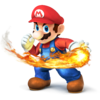 Mario |
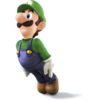 Luigi |
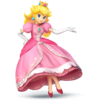 Peach |
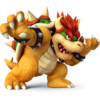 Bowser |
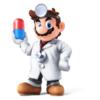 Dr. Mario |
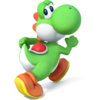 Yoshi |
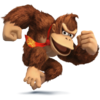 Donkey Kong |
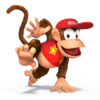 Diddy Kong | ||||||||
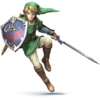 Link |
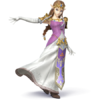 Zelda |
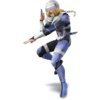 Sheik |
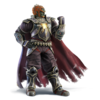 Ganondorf |
 Toon Link |
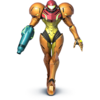 Samus |
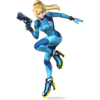 Zero Suit Samus |
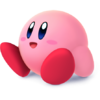 Kirby | ||||||||
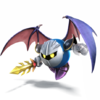 Meta Knight |
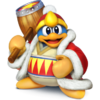 King Dedede |
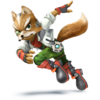 Fox |
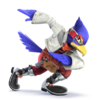 Falco |
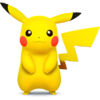 Pikachu |
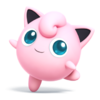 Jigglypuff |
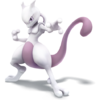 Mewtwo (DLC) |
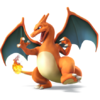 Charizard | ||||||||
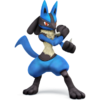 Lucario |
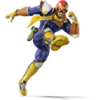 Captain Falcon |
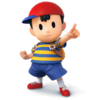 Ness |
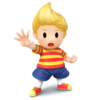 Lucas (DLC) |
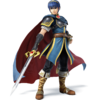 Marth |
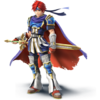 Roy (DLC) |
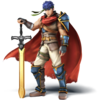 Ike |
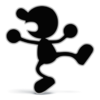 Mr. Game & Watch | ||||||||
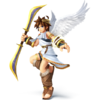 Pit |
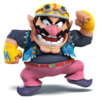 Wario |
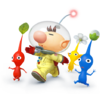 Olimar |
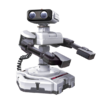 R.O.B. |
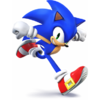 Sonic |
|||||||||||
| Newcomers (21) | |||||||||||||||
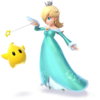 Rosalina & Luma |
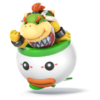 Bowser Jr. |
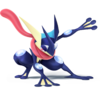 Greninja |
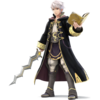 Robin |
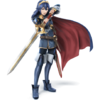 Lucina |
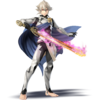 Corrin (DLC) |
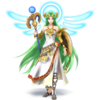 Palutena |
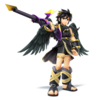 Dark Pit | ||||||||
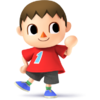 Villager |
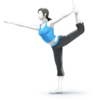 Wii Fit Trainer |
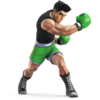 Little Mac |
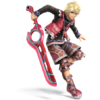 Shulk |
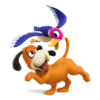 Duck Hunt |
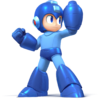 Mega Man |
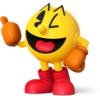 Pac-Man |
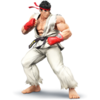 Ryu (DLC) | ||||||||
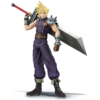 Cloud (DLC) |
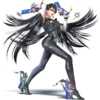 Bayonetta (DLC) |
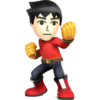 Mii Brawler |
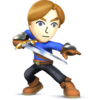 Mii Swordfighter |
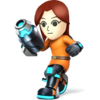 Mii Gunner |
|||||||||||
Bold denotes unlockable characters in both versions.
Bolded italics denote unlockable characters in the 3DS version only.
Multi-player stages
Stages in Super Smash Bros. for Nintendo 3DS
Bold denotes unlockable stages.
Stages in Super Smash Bros. for Wii U
Bold denotes unlockable stages.
Single-player modes
Shortly after the initial E3 2013 trailers, Sakurai said there would be a single-player story mode included in the new Smash Bros.[11], but that it would be different from Brawl's Subspace Emissary, and that there would be no cutscenes. However, he would later recant this, and announce that he decided to cut any sort of story mode altogether [12], while stating the 3DS version would have a different sort of separate mode from standard versus play. He did not provide any other details as to what this, or any other single-player modes will consist of. On 20 January 2014, on a Miiverse post, Sakurai repeated the fact the game would not have a story mode.[13] Screenshots that people thought were from a new story mode in the 3DS version were later revealed to be from Smash Run, which also seems to be the new 3DS mode Sakurai implied when he announced the cutting of the story mode.
Multi-player modes
- VS Mode
- Smash Run (3DS exclusive): In this mode, up to 4 players have 5 minutes to traverse a huge dungeon-like environment, collecting various power-ups and facing many enemies from various games. After the time limit, the players go at it in a battle utilizing their boosted powers, and can then do subsequent matches with those power-ups. Sakurai mentioned in the Smash Bros. Direct video that this mode was inspired by Kirby Air Ride's City Trial mode, which has a similar premise.
- Players will also be able to have items set to their characters, in a way that may reflect Brawl's Subspace Emissary mode.
Apparent changes from Brawl
Gameplay changes
- The size differences between bigger and smaller characters will be somewhat more drastic, which can be seen when comparing the pictures on the right, with Sakurai remarking "A group shot of the big guys. How much bigger are they compared to Mario?" for the latter image.[14] It should be noted that character sizes seem to fluctuate between images, suggesting that their sizes will be different in the final build.
- It appears the movesets and animations of returning characters will go through a larger amount of change than the returning characters did from the transition of Melee to Brawl, with many returning characters being shown with completely new moves, and some appear to be getting significantly altered (such as Bowser).
- It additionally appears there is a greater emphasis on buffing the returning characters, with even characters that were top and high tier in Brawl, such as Diddy Kong and Lucario, being shown to receive explicit significant buffs.
- Mid-match character changes, such as Zelda/Sheik's Transform, will no longer exist. This means Zelda and Sheik, along with Samus and Zero Suit Samus, will be completely separate characters that are no longer able to transform to the other. This also means the Pokémon Trainer does not return as a playable character. Charizard is now its own stand-alone character.
- In an interview with Kotaku, Sakurai confirmed that tripping would not return.[15] It seems he was referring to random tripping, since forced tripping appears to have returned, as shown by the return of the banana peel item.
- Similarly, it appears potential randomness in moves is being cut down; for example, Olimar now plucks his Pikmin in a set order instead of the Pikmin plucked being chosen at random, and King Dedede's Waddle Dee Throw has been replaced with a new move that involves throwing only Gordos instead of throwing one randomly chosen minion.
- However, Peach's down special appears to still be random, with some turnips doing more damage than others, and there is no set order of which turnips are pulled from the ground, additionally, Mr. Game & Watch's Judge is now even more random, being able to get the same number twice in a row. Newcomer Villager's up and down aerial moves also have a random element.
- Similarly, it appears potential randomness in moves is being cut down; for example, Olimar now plucks his Pikmin in a set order instead of the Pikmin plucked being chosen at random, and King Dedede's Waddle Dee Throw has been replaced with a new move that involves throwing only Gordos instead of throwing one randomly chosen minion.
- To appeal to both casual and hardcore gamers, Sakurai said the game's speed will be between that of Melee and Brawl.[16] In support of this, in the gameplay footage shown so far, characters seem to be falling faster than they do in Brawl.
- In a similar appeal to both casual and hardcore gamers, there are now two distinct type of With Anyone Wi-Fi modes; one called For Fun, which seems similar to the previous game's casual-styled Basic Brawl, and one called For Glory, a mode explicitly catered to competitive-styled play.
- Additionally, almost every stage now will have an Ω Form, where the stage's layout is altered into that of Final Destination. These forms cannot be played on in the For Fun mode, while they're the only forms available in the For Glory mode.
- Most attacks appear to have significantly higher base knockback.
- The ability to act out of hitstun in has been removed when sent large distances; however, at smaller launch distances, the amount of hitstun appears to be reduced, or character appear to be able to act out of hitstun. This, combined with higher base knockback in general, makes true combos rare.
- Neutral attacks that previously ended in an indefinite number of weak hits (such as Fox's and Kirby's) will now "always transition into a finishing move", making such moves safer to use (as simply ending the move no longer leaves the opponent nearby). It is currently unclear if rapid jabs can still be held infinitely, or if they will automatically transition into the finishing hit after a period of time.[17] Rapid jabs that end in weak finishers and combo into themselves, such as Pikachu's, do not seem to have been changed.
- Holding the right control stick (C-Stick on GameCube controller) in a direction will now charge smash attacks until the stick is released.
- It appears that pummeling has been sped up dramatically.
- The mechanics of grabbing ledges will undergo an unprecedented overhaul[18]. The difference between fast and slow edge options based on current damage will be removed, the length of intangibility given by grabbing the ledge will be affected by air time and current damage, and there appears to be some way to steal the ledge from opponents edge hogging, though no information about it was given.
- Tether recoveries will be buffed, with their reach being improved. In addition, multiple tethers can grab onto the same edge at once, making such moves less suspectible to edgehogging, though "who actually grabs hold is determined by the same rules as the standard ledge grab".
- Star KOs no longer occur near the end of a timed match; they will instead be replaced by regular blast KOs.
- It appears that swimming has been removed.
- The special moves for characters can be modified using a new moveset customization feature. The customization will go beyond simple damage and knockback altering, with the moves' functions and aesthetics being able to be completely revamped.
- The Wii U version will be compatible with a set of amiibo figurines utilizing the Wii U GamePad and near field communication (NFC). By using their respective figurine, players can give a character custom moves and level them up to level 50.
- Paths can be chosen by the player in Classic Mode. Different CPU-opponents appear on different paths.
- In All-Star Mode, the order of characters fought is now based upon the character's personal first appearance.
- All-Star Mode is also now available from the start of the game, unlike Melee and Brawl, where it had to be unlocked by unlocking every character.
- The amount of damage taken by a character increases all knockback dealt by him/her. [19]
- If a character runs off an edge and takes no action before landing on another platform, they will immediately continue running once they hit the ground. This is accompanied by a new "rolling" animation as they run off edges.
Aesthetic and sound changes
- In general, the game is much more stylized and visually intense than previous entries, with the overall colors being bolder and brighter and many elements having been redone to stand out more.
- The characters' design styles are more distinct from each other and more in-line with their home series, in contrast to Brawl which gave the characters a more unified realistic look. For example, characters from cartoony franchises such as the Mario and Kirby series are much closer to their native styles, while those from more realistic-looking franchises such as The Legend of Zelda and Metroid series maintain more realistic appearances.
- Some characters will always stand facing the screen regardless of which direction they face, with the intent of having them face the screen more often.
- This applies to movement and attack animations as well, often involving them mirroring their stance and attacks. Due to this, there is a possibility that some attacks may behave slightly differently when they interact with each other from different directions. For example, if such an "ambidextrous" character and another character that does not use this feature attack each other, the attacks may clang in a different location or even connect with the opponent differently depending on what direction the two characters are facing.
- Damage percentage is now displayed with a metallic gradient and rises through yellow shades before turning red.
- Several visual effects are significantly bolder and brighter (and so are arguably more visually disruptive):
- Attacks' visual effects (such as motion blurs) are in general more pronounced, with bright saturated blurs replacing the previous game's subtle ones.
- Smoke trails of hit characters are now thick trails of light, colored according to which player would be credited with a potential KO. Should the KO occur, the attacker will flash with an aura of their own color.
- The design of KOs themselves closely resembles those in Brawl, but the soundbite sounds much more like an actual explosion now.
- Hits that deal enough knockback to KO the character before they can act afterwards produce a red-and-black lightning effect on contact.
- Certain items such as the Bumper and Home-Run Bat have been given new, more striking designs. The Home-Run Bat, for example, is more ornate and is now colored to match the new high-knockback lightning effect.
- Characters now have team colored outlines in Team Battles, and can select a color normally.
- Revival platforms now have a section that changes color based on the remaining time left before the platform disappears. This section starts out yellow before fading between orange and then turning red before disappearing.
- Characters with high damage percentages now emit steam, presumably to make their vulnerability more clear. Characters with very high damage will also flash red.
- In For 3DS, players can tap on a characters icon on the bottom screen to place a marker on that character on the top screen, in order to more easily follow their movements.
- Victory scenes seem to be a cross between all of the previous three games. Like in Smash 64, the screen transitions to the victory scene, instead of just cutting to the scene, while only the winner is shown in the main area like in Melee, with the others applauding in small windows on the screen. However, instead of a featureless black screen, the winner's area is an environment similar to that in Brawl’s victory screen.
- Like Brawl, though, all fighters appear in the environment if there is no contest.
- Screen KOs now feature characters hitting the screen and staying there ("splatting") for a moment before sliding off, whereas in preceding games, they simply bumped into the screen and kept falling at their initial speed.
- The Stock Icons for Stock Matches are now akin to those in Melee, in which they appeared as the character's head, as opposed to Brawl, where they were merely small circles colored depending on the player. Additionally, the stock icons are placed below the HUD that contains the character's damage percentage rather than on it.
- Assist trophies and Poké Ball Pokémon now come with a marker above them, in order to indicate which player activated them.
- Additionally, certain items (at least in the 3DS version) come with white triangular markers above them to make them more noticeable.
- Some of the more realistic sound effects from Brawl have been eschewed in favor of sound effects which are inspired by the characters' home franchises, such as the one that plays when Kirby uses Inhale, or the one that plays when Mario takes a hit.
- Like in the previous games, each character has a voice clip for whenever they take a fair amount of knockback. Though now, it plays right as they receive the blow rather than during the knockback itself.
- Most flashtint effects (such as flashing white while invincible) do not display while the game is paused.
Other apparent changes
- Sakurai stated that the short movies for introducing new characters, including Mega Man, Villager, and Wii Fit Trainer, will be viewable without having to be unlocked, much like the reveal trailers for Snake and Sonic in Brawl's Movies menu.
- As claimed during the Smash Bros. Direct, Assist Trophies will "figure into all-star mode". This appears to refer to the Wii U version, as they do not appear in the 3DS version's All-Star Mode at all, even as items, in its current state.
Console differences
The Wii U and 3DS versions of the game were shown to have distinct art styles from one another in that the 3DS version uses flatter shading and optional black outlines to make characters easier to see at a distance; a graphical style reminiscent of other 3DS games such as Fire Emblem: Awakening and Pokémon X/Y. These outlines will be customizable as Sakurai stated players can change the size of the outlines or get rid of them completely. It is also known that several if not most stages will be version-specific, with the Wii U version's stages being based on console games, while the 3DS version's stages being based on handheld games.[20] It is confirmed that there will be no cross-platform gameplay between the Wii U and 3DS versions due to the exclusive stages to each version, but it has been mentioned that "customized characters" from the 3DS version can be imported into the Wii U version. Very little detail has been given as to what "character customization" entails; it has only been revealed that customizations will not be different costumes and will not have to be unlocked through repetitive tasks.[21]
While the two versions will have the same playable cast, it has been confirmed by Sakurai that there will be a few differences with the characters summoned from Assist Trophies and Pokémon summoned from Poké Balls in the 3DS version[22], though it has not been stated if there will either be explicit version exclusives or a few will be cut out of the 3DS version for space issues.
Another difference confirmed by Sakurai is that the trophies will be different in the two versions, with the trophies in the 3DS version being mainly from handheld games, while the trophies in the Wii U version will be from console games.[23]
When it comes to music, each stage on the 3DS version will only have two music tracks available, as was the case in Melee. On the other hand, the Wii U version will see the return of Brawl’s My Music option, with a large selection of tracks available for each stage.
Sakurai has stated that there are currently no plans to implement downloadable content or touch screen controls of any variety. However, he did state that once the game is released DLC may be something they will take into consideration.[24]
Trailers
E3 2013 |
E3 2014 |
Gallery
Miscellaneous
Characters
Splash art of a Mii Gunner, based on Abraham Lincoln.
Splash art of a Mii Swordfighter, based on Elijah Wood.
English splash art of a Mii Brawler, based on Ice-T.
Japanese splash art of a Mii Brawler, based on Shinya Arino.
Japanese splash art of a Mii Brawler, based on Mayu Watanabe of AKB48.
Japanese splash art of a Mii Swordfighter, based on Yuki Kashiwagi of AKB48.
Japanese splash art of a Mii Gunner, based on Minami Takahashi of AKB48.
Characters from the AKB48 Trailer.
Trivia
- Super Smash Bros. 4 is the only game to feature a playable character from a series that debuted after its predecessor's release, with Shulk from Xenoblade.
- Super Smash Bros. 4 is the only game in the entire series not to include a new Legend of Zelda or Star Fox character.
- Super Smash Bros. 4 is the first game in the series to rip victory themes straight from its predecessor. That said, Bowser's victory theme (shared with Bowser Jr.) is completely remixed, making him the only veteran character to not follow this rule.
- Super Smash Bros. 4 is the only game that does not have more newcomers than its predecessors (unless one counts each of the Mii Fighters as a separate character).
References
- ^ Nintendo.com's page for the 3DS version
- ^ http://www.classification.gov.au/Pages/View.aspx?sid=baAYDzOrSLTJS31kqfUnSQ%253d%253d&ncdctx=kY4ZcmxpzFiR75%252faQboRyhefdrcxUukb9ZDwrHw7sGSByd%252fNX2SA4QwXLhHqWtIb
- ^ Jump up to: a b IGN: "Namco Bandai Developing Next Smash Bros."
- ^ Andriasang.com: "Smash Bros. U & 3DS development appears to be very early"
- ^ Cubed3: "Sakurai Begins Work on New Smash Bros for Wii U and 3DS"
- ^ Nintendo Everything: "Next Smash Bros. in “first step of the process”, Sakurai worried about long wait"
- ^ Nintendo Everything: "Sakurai: Capcom character could appear in next Smash Bros."
- ^ Official Nintendo Magazine: "Smash Bros Wii U/3DS: How they'll work together"
- ^ Official Nintendo Magazine: "Smash Bros Wii U may not feature more characters"
- ^ Jul 2, 2012 Tweet by Sora_Sakurai (Masahiro Sakurai)
- ^ My Nintendo News: "Smash Bros Wii U And 3DS Story Mode Won’t Be Like Brawl"
- ^ http://kotaku.com/the-next-super-smash-bros-wont-have-a-story-mode-or-c-906856304
- ^ Miiverse: "To be clear, the new Super Smash Bros. games do not feature a story mode like The Subspace Emissary"
- ^ https://miiverse.nintendo.net/posts/AYMHAAACAADMUKlhFSRn7g
- ^ Kotaku: "No More Tripping In The New Smash Bros"
- ^ Polygon: "New Super Smash Bros. removes tripping; game speed between Brawl and Melee"
- ^ https://miiverse.nintendo.net/posts/AYMHAAACAABnUYnly14CnA
- ^ https://miiverse.nintendo.net/posts/AYMHAAACAABnUYngiZ2EwA
- ^ The "Rage Effect"
- ^ Nintendo's YouTube channel: "Wii U & Nintendo 3DS Developer Direct - Super Smash Bros. for Nintendo 3DS and Wii U @E3 2013"
- ^ Joystiq: "No cross-platform play for Smash Bros on 3DS and Wii U"
- ^ https://miiverse.nintendo.net/posts/AYMHAAACAABnUYntl6TU1g
- ^ http://miiverse.nintendo.net/posts/AYMHAAACAADRUqFpGGYsgQ
- ^ Gamnesia: "No Plans for DLC or Touch Controls in the New Smash Bros., Tripping is Removed"
External links
| hide Super Smash Bros. series | |
|---|---|
| Super Smash Bros. · Super Smash Bros. Melee · Super Smash Bros. Brawl · Super Smash Bros. 4 (for Nintendo 3DS · for Wii U) · Super Smash Bros. Ultimate |

